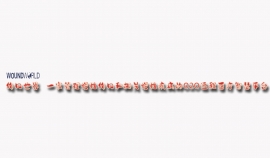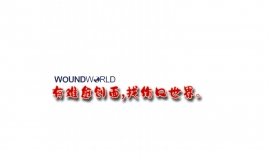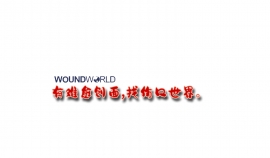
伤口世界

- 星期五, 08 11月 2024
Holistic and Personalized Strategies for Managing in Elderly Type 2 Diabetes Patients
Jae-Seung Yun1 , Kyuho Kim1 , Yu-Bae Ahn1 , Kyungdo Han2 , Seung-Hyun Ko1
1 Department of Internal Medicine, St. Vincent’s Hospital, College of Medicine, The Catholic University of Korea, Seoul,
2 Department of Statistics and Actuarial Science, Soongsil University, Seoul, Korea
Due to increased life expectancy and lifestyle changes, the prevalence of diabetes among the elderly in Korea is continuously rising, as is the associated public health burden. Diabetes management in elderly patients is complicated by age-related physiological changes, sarcopenia characterized by loss of muscle mass and function, comorbidities, and varying levels of functional, cognitive, and mobility abilities that lead to frailty. Moreover, elderly patients with diabetes frequently face multiple chronic conditions that elevate their risk of cardiovascular diseases, cancer, and mortality; they are also prone to complications such as hyperglycemic hyperosmolar state, diabetic ketoacidosis, and severe hypoglycemia. This review examines the characteristics of and management approaches for diabetes in the elderly, and advocates for a comprehensive yet personalized strategy.
Keywords: Aged; Diabetes mellitus, type 2; Frailty; Multimorbidity; Precision medicine; Sarcopenia

- 星期四, 07 11月 2024
干细胞在整形修复美容领域研究和临床试验的专家共识
中国医师协会整形美容医师分会干细胞和再生医学学组
【摘要】 干细胞是一类具有分化潜能的细胞,随着近年来对干细胞研究的深人,干细胞在促进组织修复与再生的作用也得到越来越多的关注。本学组就干细胞在整形修复美容领域的基础研究及临床试验研究组织专家讨论,并将专家共识总结成文,为干细胞在整形修复美容领域的研究与未来临床转化提供参考与支持。

- 星期三, 06 11月 2024
An Innovative Treatment Using Calcium Hydroxyapatite for Non-Surgical Facial Rejuvenation: The Vectorial-Lift Technique
Virginia Marcia Amaral1 iD• Helena Hotz Arroyo Ramos2 • Fernanda Aquino Cavallieri3 • Mariana Muniz4 • Guilherme Muzy5 • Ada Trindade de Almeida6
1 IVA Medical Institute, Av. dos Bandeirantes 1518, Belo Horizonte CEP: 30.315-032, Brazil
2 Vito´ria, Brazil
3 Rio de Janeiro, Brazil
4 Sa˜o Paulo, Brazil
5 Sa˜o Paulo, Brazil
6 Hospital do Servidor Pu´blico Municipal de Sa˜o Paulo, Sa˜o Paulo, Brazil
Received: 13 January 2024 / Accepted: 9 April 2024 / Published online: 7 May 2024
Virginia Marcia Amaral 该Email地址已收到反垃圾邮件插件保护。要显示它您需要在浏览器中启用JavaScript。
© The Authors 2024, corrected publication 2024
Abstract Background The facial aging process entails alterations in the volume, shape, and texture of all skin layers over time. Calcium hydroxyapatite (CaHA) is a well-established safe skin filler with unique properties to resolve some skin alterations by stimulating neocollagenesis. The vectoral-lift (V-lift) technique targets the global repositioning of facial structures by addressing distinct anatomical injection planes. It includes deep facial augmentation with Radiesse PlusTM to retain ligament restructuring and superficial subcutaneous enhancement with diluted Radiesse DuoTM. Herein, we present cases that illustrate the use of this approach.
Methods This pilot study enrolled 36 participants (33 women and three men; ages 37–68 years) in a Brazilian clinical setting, and all patients underwent a single treatment. Photographs were taken at rest, in frontal and oblique views, before injection, and 90 days after treatment.
Results Treatment resulted in elevation of the upper and middle face, notable improvements in the infraorbital hollow, and adjustment of the mean facial volume.
Conclusions The V-lift technique is a three-dimensional pan-facial treatment that relies on ligament support and face vectoring to obtain a lifting effect and facial contour restoration. It encompasses deep facial augmentation involving the use of Radiesse PlusTM for restructuring and retaining ligaments and Radiesse DuoTM for superficial subcutaneous enhancement. This approach targets a global repositioning of the facial structures by addressing distinct anatomical injection planes. It achieves a repositioning of the overall facial anatomy without requiring a substantial volumetric expansion.
Level of Evidence IV This journal requires that authors assign a level of evidence to each article. For a full description of these Evidence-Based Medicine ratings, please refer to the Table of Contents or the online Instructions to Authors www.springer.com/00266.
Keywords Skin aging Collagen Plastic surgery Dermatology Aesthetics Calcium hydroxyapatite Biostimulation

- 星期二, 05 11月 2024
The efcacy of hyaluronic acid fragments with amino acid in combating facial skin aging: an ultrasound and histological study
Antonio Scarano1 · E. Qorri2 · A. Sbarbati3 · S. A. Gehrke4 · Alessio Frisone1 · D. Amuso3 · Sergio Rexhep Tari1
Received: 30 March 2024 / Accepted: 17 May 2024 / Published online: 24 June 2024
© The Author(s) 2024
Antonio Scarano
该Email地址已收到反垃圾邮件插件保护。要显示它您需要在浏览器中启用JavaScript。
E. Qorri
该Email地址已收到反垃圾邮件插件保护。要显示它您需要在浏览器中启用JavaScript。
A. Sbarbati
该Email地址已收到反垃圾邮件插件保护。要显示它您需要在浏览器中启用JavaScript。
S. A. Gehrke
该Email地址已收到反垃圾邮件插件保护。要显示它您需要在浏览器中启用JavaScript。
D. Amuso
该Email地址已收到反垃圾邮件插件保护。要显示它您需要在浏览器中启用JavaScript。
Sergio Rexhep Tari
该Email地址已收到反垃圾邮件插件保护。要显示它您需要在浏览器中启用JavaScript。
1 Department of Medical, Oral and Biotechnological Sciences, University of Chieti-Pescara, Strada Marcello Mucci 38/B, 66100 Chieti, Italy
2 Department of Dentistry, Faculty of Medical Sciences, Albanian University, 1001 Tirana, Albania
3 Department of Neurosciences, Biomedicine and Movement Sciences, Anatomy and Histology Section, School of Medicine, University of Verona, Verona, Italy
4 Department of Research, Bioface/PgO/UCAM, Montevideo, Uruguay
Abstract
Background Various techniques have been employed in aesthetic medicine to combat skin aging, in particular that of the facial region. Hyaluronic acid is utilized to enhance moisture levels and extracellular matrix molecules. This study aims to histologically assess the efects of low molecular weight hyaluronic acid fragments combined with amino acids (HAAM) on facial skin rejuvenation through intradermal microinjections.
Methods A total of twenty women, with an average age of 45 and ranging from 35 to 64 years old, participated in the study, including 8 in menopause and 12 in the childbearing age group. Mesotherapy was used to administer HAAM to the patients. Prior to and three months after the treatment, each patient underwent small circular punch biopsies. Ultrasound examinations were conducted using B-mode, capturing 2D images in longitudinal or transverse orientations with frequencies ranging from 5 to 13 Mega-hertz (MY LAB X8, ESAOTE, Genova, Italy). A total of 60 ultrasound examinations were taken, with 30 collected before treatment and 30 after treatment.
Results The histological analysis demonstrates an increase in fbroblast activity resulting in the production of Type III reticular collagen, as well as an increased number of blood vessels and epidermal thickness. However, the analysis of ultrasound data before and after treatment showed no statistical diference in skin thickness in malar area, chin and mandibular angle.
Conclusions Histological assessments indicate that subcutaneous infltration of HAAM has a substantial impact on the dermis of facial skin.
Keywords Hyaluronic acid · Hyaluronic acid fragments · Amino acid · Fibroblast · Skin aging · Ultrasound

- 星期一, 04 11月 2024
GLP1R Gene Expression and Kidney Disease Progression
Jefferson L. Triozzi, MD, MSCI; Zhihong Yu, MS, PhD; Ayush Giri, MS, PhD; Hua-Chang Chen, PhD; Otis D. Wilson, BBA; Brian Ferolito, MS; T. Alp Ikizler, MD; Elvis A. Akwo, MD, MS; Cassianne Robinson-Cohen, PhD; John Michael Gaziano, MD, MPH; Kelly Cho, PhD, MPH; Lawrence S. Phillips, MD; Ran Tao, PhD; Alexandre C. Pereira, MD, PhD; Adriana M. Hung, MD, MPH; for the VA Million Veteran Program
Key Points
Question Are glucagon-like peptide 1 receptor agonists (GLP-1RAs) associated with kidney disease progression?
Findings In this genetic association study of 353 153 adults, higher genetic GLP1R gene expression as a proxy for GLP-1RAs was associated with a small reduction in the risk of kidney disease progression, even after adjusting for obesity and diabetes.
Meaning These findings support a nephroprotective role of GLP-1RAs.
Abstract
IMPORTANCE Glucagon-like peptide 1 receptor agonists (GLP-1RAs) may have nephroprotective properties beyond those related to weight loss and glycemic control.
OBJECTIVE To investigate the association of genetically proxied GLP-1RAs with kidney disease
DESIGN, SETTING, AND PARTICIPANTS This genetic association study assembled a national retrospective cohort of veterans aged 18 years or older from the US Department of Veterans Affairs Million Veteran Program between January 10, 2011, and December 31, 2021. Data were analyzed from November 2023 to February 2024.
EXPOSURES Genetic risk score for systemic GLP1R gene expression that was calculated for each study participant based on genetic variants associated with GLP1R mRNA levels across all tissue samples within the Genotype-Tissue Expression project.
MAIN OUTCOMES AND MEASURES The primary composite outcome was incident end-stage kidney disease or a 40% decline in estimated glomerular filtration rate. Cox proportional hazards regression survival analysis assessed the association between genetically proxied GLP-1RAs and kidney disease progression.
RESULTS Among 353 153 individuals (92.5% men), median age was 66 years (IQR, 58.0-72.0 years) and median follow-up was 5.1 years (IQR, 3.1-7.2 years). Overall, 25.7% had diabetes, and 45.0% had obesity. A total of 4.6% experienced kidney disease progression. Overall, higher genetic GLP1R gene expression was associated with a lower risk of kidney disease progression in the unadjusted model (hazard ratio [HR], 0.96; 95% CI, 0.92-0.99; P = .02) and in the fully adjusted model accounting for baseline patient characteristics, body mass index, and the presence or absence of diabetes (HR, 0.96; 95% CI, 0.92-1.00; P = .04). The results were similar in sensitivity analyses stratified by diabetes or obesity status.
CONCLUSIONS AND RELEVANCE In this genetic association study, higher GLP1R gene expression was associated with a small reduction in risk of kidney disease progression. These findings support pleiotropic nephroprotective mechanisms of GLP-1RAs independent of their effects on body weight and glycemic control.



